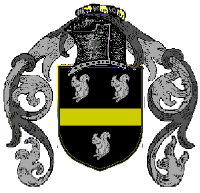| |

|
 |
|
 1595 - 1641 (46 years) 1595 - 1641 (46 years)
-
| Name |
Pierce, William |
| Birth |
1595 |
Bristol, Somersetshire, England  |
| Gender |
Male |
| Death |
13 Jul 1641 |
Boston, Suffolk Co., Massachusetts, USA  |
| Person ID |
I2958 |
My Genealogy |
| Last Modified |
20 Dec 2024 |
-
| Notes |
Captain William Pierce in the early history of the colonies was the
most celebrated master of ships that came into the waters of New
England. He was on very intimate terms with all the leading colonists,
and was a warm friend of Winslow and Bradfor. He was first noticed in
the early records of the colony in 1622, when he was master of
the"Paragon," the owner of which ship was his brother John Pierce of
London. In 1623, Capt. Pierce brought over to Plymouth the "Anne" with
her noteworthy company. In 1624, he came in the "Charity," conveying
Winslow, with his cattle which were the first brought in New England.
In 1625 he was at Plymouth in the "Jacob," again bringing Winslow and
more cattle.
In 1629, he commanded the renowned "Mayflower," and in her he took a
company from Holland as far as the Bay on their way to Plymouth; and
in the next year, Feb., 1630, he came with the "Lion" from Bristol,
England, which was a part of Winthrop's fleet. Owing to the
destitution at the Bay, he was hurried back for provisions, with which
he returned November 22, just as the crisis of the famine had arrived.
He also brought sixty passengers, including Roger Williams and his
wife Mary. november 29, 1631, he came over again in the "Lion," and
with him John Elliot and Governor Winthrop's wife. In 1632 he sailed
once more to Boston and Plymouth in the "Lion;" but after carrying
Winthrop to Weymouth lost his ship on the Virginia coast, for which
place he sailed October 27, 1632. In 1634 he was gathering Oldham's
corn in the "Rebecca," and taking observations in the "Narragansett,"
and the next year commanded the defense of London, and was first in
the West Indies, and then later on in ice, rescuing refugees from the
Connecticut Valley and returning them to Boston. In 1636, with the
fine new ship "Desire," one hundred and twenty tons, built for him at
Marblehead, he went with Endicott's force to Block Island. In 1637, he
carried supplieds from Boston for the soldiers of the Pequod War and
acted as tender. In 1638, he sailed between Boston and the West
Indies; and it is sad to relate that according to the usage of the
times, he took out several Pequod prisoners as bondmen, and returned
with a few negro slaves, though even then some leading citizens
condemned this traffic. At this time he seems to have presented
Winthrop with what the latter calls an alegarto - an animal which much
interested the grave Bostonians. In 1638, he cleared the "Desire" from
London with passengers for Boston; the English officers writing his
name "Piers." From Boston he kept on to the West Thames in
twenty-three days -a passage which would even now reflcet much credit
on such a craft and its captain.
It is well known that Pierce's Almanack for 1639 was the first thing
in book form printed in the English colonies.
"Saints and Strangers" by George F. Willison pg 242 A week or two
later the Charity reappeared in the harbor, again under the command of
Captain William Peirce, renowned as the "ferryman of the North
Atlantic" because he brought across so many of New England's early
settlers, later settling down himself at Boston. Master of ANNE - of
London (140 tons)
|
|
|
|